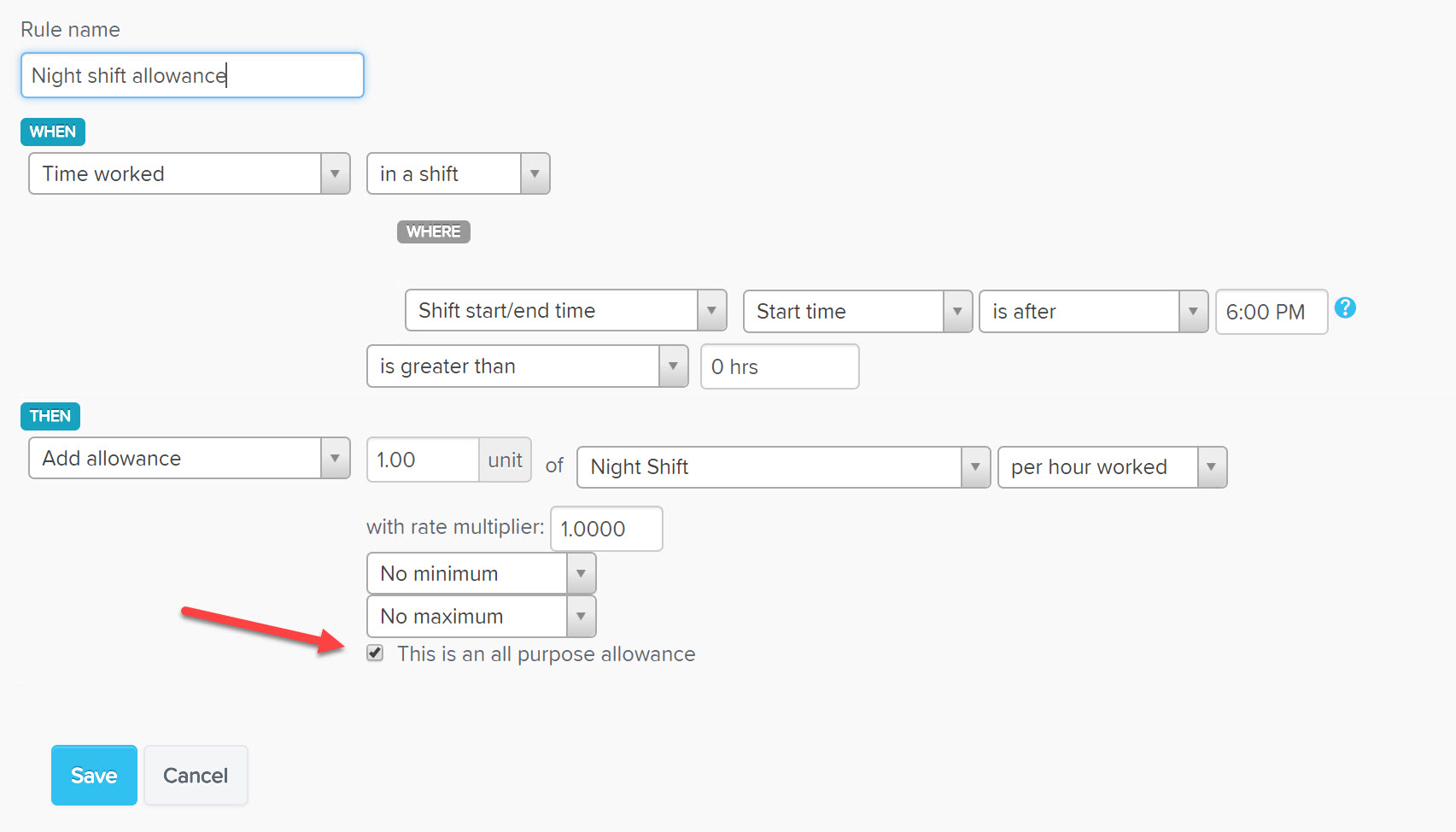- Knowledge Base AU
- Pay Conditions
- Using rule sets to automate pay conditions
-
Payroll
-
NoahFace
-
Your training
-
Reporting
-
Add Ons (AU)
-
Awards and Employment Agreements
-
Partners (AU)
-
Time and Attendance (AU)
-
Timesheets (AU)
-
Timesheets (MY)
-
Video Tutorials
-
Director Pays
-
Pay Runs (AU)
-
Business Settings
-
General (NZ)
-
General (AU)
-
Business Settings (SG)
-
Business Settings (NZ)
-
Getting Started (AU)
-
Rostering (AU)
-
Pay Conditions
-
Timesheets
-
Brand/Partners (NZ)
-
Business Settings (AU)
-
Product Release Notes
-
Timesheets (SG)
-
API (AU)
-
Swag
-
Partners (SG)
-
Timesheets (NZ)
-
Business Settings (MY)
-
Partners (UK)
-
Partners (MY)
-
ShiftCare
-
Employees
All purpose allowances
All purpose allowances are really only "seen" or "used" in pay condition rules...

Ticking the box in your pay condition rule to make the allowance you're paying an "all purpose" allowance has no significance beyond the way the allowance is calculated.
The purpose of an all purpose allowance is to apply the same penalty multipliers to the allowance as used in the pay category being used to pay the earnings for the same hours.
For example - if an all purpose allowance is to be paid for all hours worked in a day, but the per unit rate will vary according to the time of day, the per hour rate for the allowance (on the employee's pay rates page) would be set up as a base allowance rate, say $1 per hour, then:
- if the employee works "ordinary time" hours they would be paid the allowance at $1 per hour
- if the employee works an afternoon shift, which attracts a 15% penalty, then the all purpose allowance would be paid at $1.15 per hour.
Additionally, if an employee takes annual leave, the allowance rate would be added to the base rate and that would be the rate that gets paid for taking leave.
So, when should you tick that box (in your pay condition rule) to make it pay an all purpose allowance?
Only when you want the allowance to be paid at different rates, in line with the penalty loadings applied to earnings for those hours.
If the allowance you want to pay is to be paid at a set rate per hour, regardless of the time of day it's being paid for, then there is no need to tick the box to make this an all purpose allowance.
Note, you can also choose to apply your own rate multiplier to pay the allowance in the rule, if it's to be a "set" amount regardless of when the allowance is paid.
